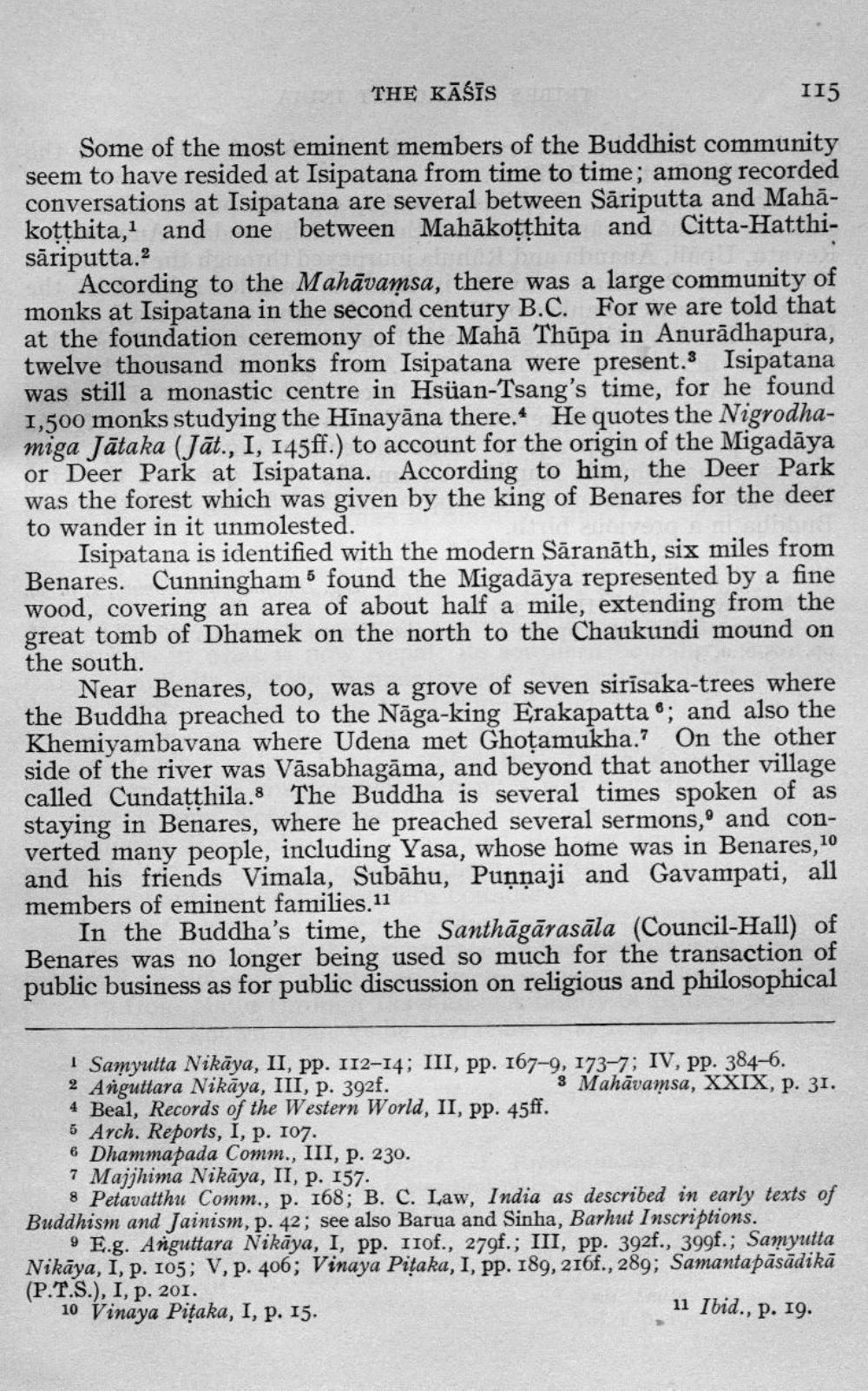________________
THE KĀŠĪS
115
Some of the most eminent members of the Buddhist community seem to have resided at Isipatana from time to time; among recorded conversations at Isipatana are several between Säriputta and Mahākotthita, and one between Mahākotthita and Citta-Hatthisāriputta.”
According to the Mahāvamsa, there was a large community of monks at Isipatana in the second century B.C. For we are told that at the foundation ceremony of the Mahā Thūpa in Anurādhapura, twelve thousand monks from Isipatana were present.3 Isipatana was still a monastic centre in Hsüan-Tsang's time, for he found 1,500 monks studying the Hinayāna there. He quotes the Nigrodhamiga Jātaka (Jāt., I, 145ff.) to account for the origin of the Migadāya or Deer Park at Isipatana. According to him, the Deer Park was the forest which was given by the king of Benares for the deer to wander in it unmolested.
Isipatana is identified with the modern Sāranāth, six miles from Benares. Cunningham 5 found the Migadāya represented by a fine wood, covering an area of about half a mile, extending from the great tomb of Dhamek on the north to the Chaukundi mound on the south.
Near Benares, too, was a grove of seven sirisaka-trees where the Buddha preached to the Nāga-king Erakapatta e; and also the Khemiyambavana where Udena met Ghotamukha.? On the other side of the river was Vāsabhagāma, and beyond that another village called Cundatthila.8 The Buddha is several times spoken of as staying in Benares, where he preached several sermons, and converted many people, including Yasa, whose home was in Benares, 10 and his friends Vimala, Subāhu, Puņņaji and Gavampati, all members of eminent families.11
In the Buddha's time, the Santhāgārasāla (Council-Hall) of Benares was no longer being used so much for the transaction of public business as for public discussion on religious and philosophical
Samyutta Nikāya, II, pp. 112-14; III, pp. 167-9, 173-7; IV, pp. 384-6. * Anguttara Nikaya, III, p. 392f.
3 Mahāvamsa, XXIX, p. 31. 4 Beal, Records of the Western World, II, pp. 45ff. 5 Arch. Reports, I, p. 107 6 Dhammapada Comm., III, p. 230. 7 Majjhima Nikaya, II, p. I57.
8 Petavatthu Comm., p. 168; B. C. Law, India as described in early texts of Buddhism and Jainism, p. 42; see also Barua and Sinha, Barhut Inscriptions.
9 E.g. Anguttara Nikāya, I, pp. 110f., 279f.; III, pp. 392f., 399f.; Samyuita Nikaya, I, p. IO5; V, p. 406; Vinaya Pitaka, I, pp. I89, 2I6f., 289; Samantapasadika (P.T.S.), I, p. 201. 10 Vinaya Pitaka, I, p. 15.
11 Ibid., p. 19.




